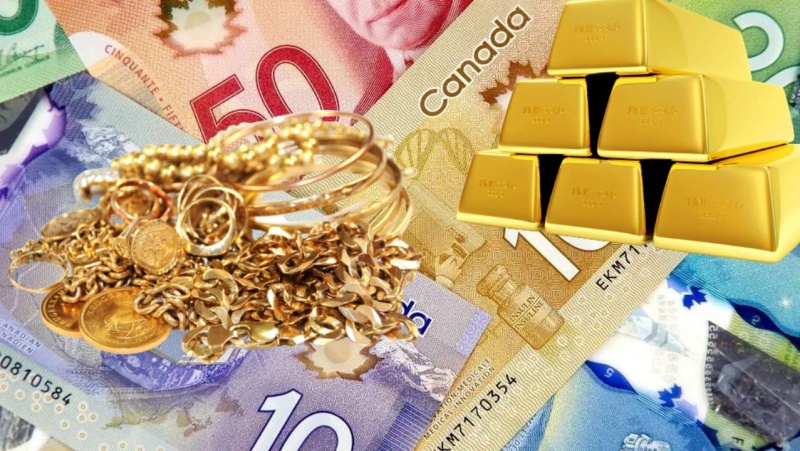The Mining Process – How Gold is Extracted from the Earth
To determine whether a mineral resource is there, preliminary prospecting is done before gold mining commences. The structural mapping finds regions of interest and assesses the possibility of gold using GIS techniques and extensive geochemical samples. Companies engaged in mining and exploration can select precise target sites. The miners can readily extract large amounts of gold-containing rock because they can pinpoint exactly where the gold is in the rocks. The gold in the ore is subsequently extracted by transferring it to the mill.
There are two main categories of gold: primary gold (also known as “mountain gold” from mines) and secondary gold (also known as “stream gold” or “nuggets”).
There are numerous ways to extract gold, such as:
- Open-Pit Mining: The gold-bearing ore is exposed after the ore-bearing rock has been destroyed by blasting. Excavators from a fleet mine specific mining locations and transport the ore containing gold to stockpiles. The ore stocks will undergo processing to remove the gold. Waste is transported by trucks to a waste rock stack that can later be used to fill previously mined areas.
- Mines underground: To do this, tunnels and shafts must be dug, and underground mining machinery must be employed to retrieve the ore. An entrance to the portal and surface infrastructure must be established once the mining location has been properly determined. A return airway, a long tunnel known as a drop, and branching lateral access roadways are built next. After the main tunnel is finished, the regular ore development and production cycles start in the lateral tunnel.
The Refining Process – How Raw Gold is Turned into Pure Gold Bars
On-Site Processing: Gold is not refined after it has been extracted from the mine; it is left in its natural state. Receiving pure gold requires additional processing. Initially, the parent rock must be crushed. The components then undergo several procedures. It is dependent upon the types of elements and minerals present in the gold ore. All these steps are intended to separate the gold from these components.
Off-Site Refining: After the gold has been through all the on-site processing, it is moved to an off-site refinery for final processing. To purify gold, a variety of methods and procedures have been employed. Let’s examine some of these:
- Use of Acid: The most typical technique for purifying gold is this one. The contaminants are removed using this procedure, which employs powerful acids. Acids employed in this procedure include nitric acid and hydrochloric acid. The precipitate that is left is made up of 99.999% gold after the other chemicals have been removed.
- Utilisation of Fire: Heat application is a different method of gold refinement. The first way to obtain pure gold is by this process. In a crucible, which is a vessel that can resist extremely high temperatures, are inserted gold scraps.
- Electricity usage: The “Wohlwill Process” is a term used to describe the method of electrically purifying gold. Emil Wohlwill, who created the technique in 1874, gave it its name. Anode (made of gold that needs to be refined), Cathode (made of 24-karat gold), and an electrolyte solution are the three essential components needed for this. An electric current is run through it after the anode and cathode are submerged in the electrolyte solution. The anode and cathode are connected via this, which causes all the gold to move. The solution dissolves each impurity. A very pure gold cathode is what is left after this procedure. The gold is then taken out, melted, and put in the proper form.
- Miller Method: Unrefined gold is melted first in the Miller procedure. It is then exposed to chlorine gas. It is simple to extract impurities and other metals from gold since the gas transforms them into solid forms. The gold obtained is still 98% pure even after this treatment.
- Cupellation: Cupels, flat bowls that can withstand high temperatures, are used in the procedure. This cupel is filled with ore and placed in a unique furnace. The pollutants are then flushed out with hot air. The contaminants and additional metals either evaporate, undergo oxidation, or are absorbed by the couple.
Depending on how the gold is going to be used, it is then shaped into different objects like bars, coins, or jewellery. For investors, higher-quality, purer gold bars are produced through the refining process.







